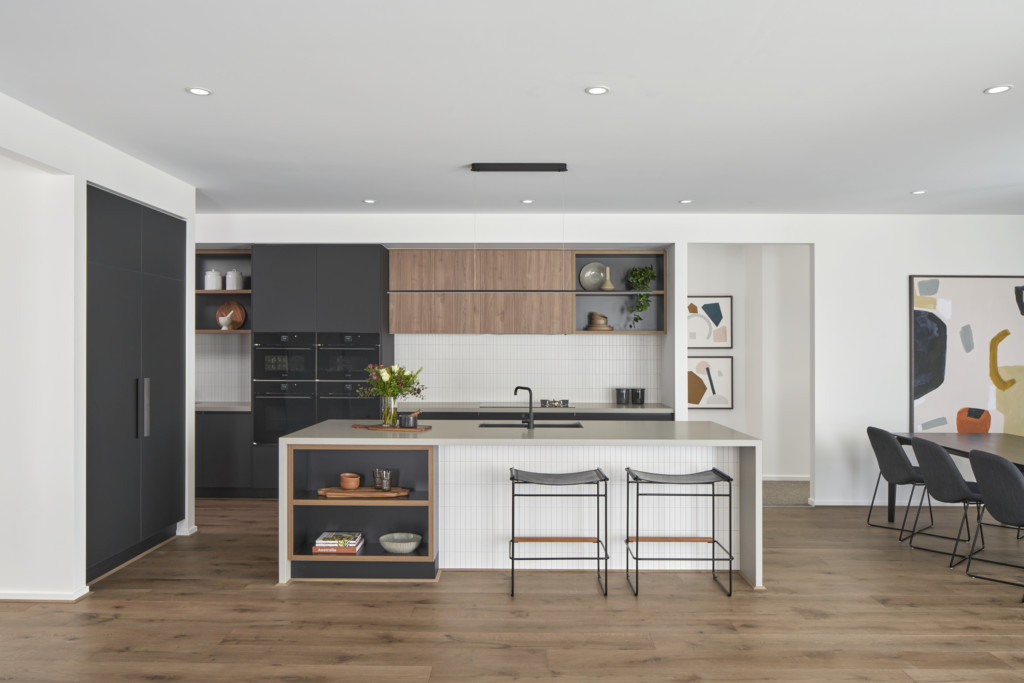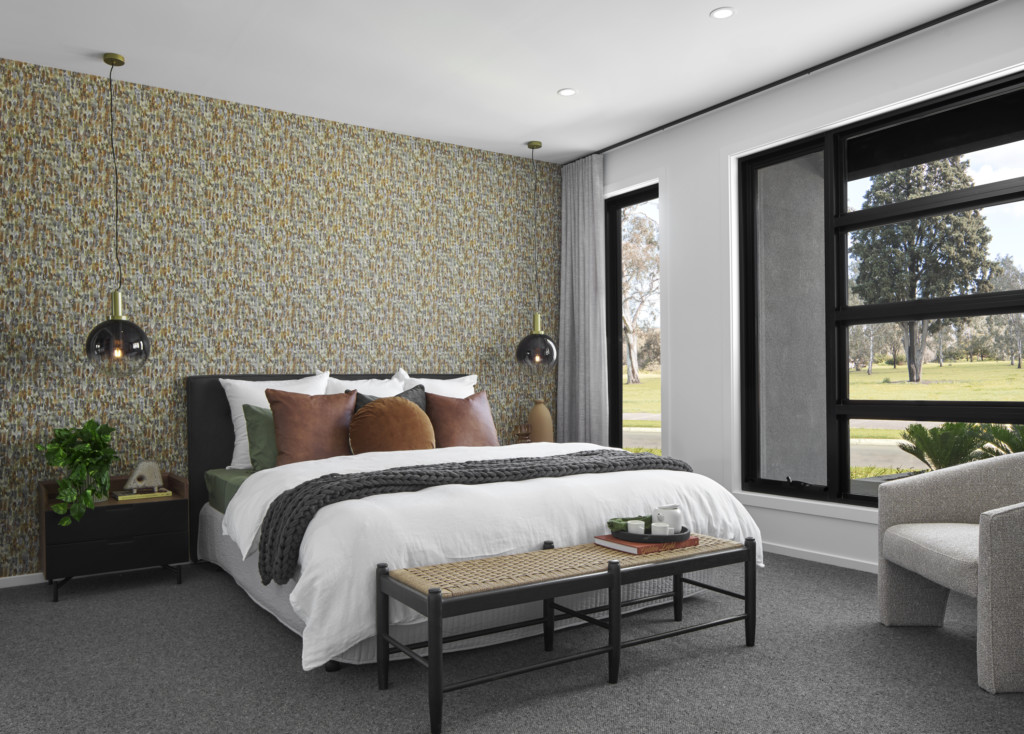What to think about when designing your home lighting
As a core part of the Interior Design Consultation, Boutique Homes customers receive a one-on-one meeting with a specialist electrical consultant. Together, you’ll create your home’s electrical plan – from the number and location of power points, to feature lighting ideas, downlight placement and tech options. To help you better prepare for your Electrical Consultation, Jessica provides her top home lighting tips below.
Choose the right light for your purpose
Looking for a light to shine bright on a specific task, such as in the kitchen or bathroom? Ceiling downlights are your go-to, with bright swivel floor lamps perfect for libraries or reading corners.
Light fittings can also be a design statement, drawing your eye to key areas of a space. For example, pendant lights are most often used over the kitchen island bench or dining table.
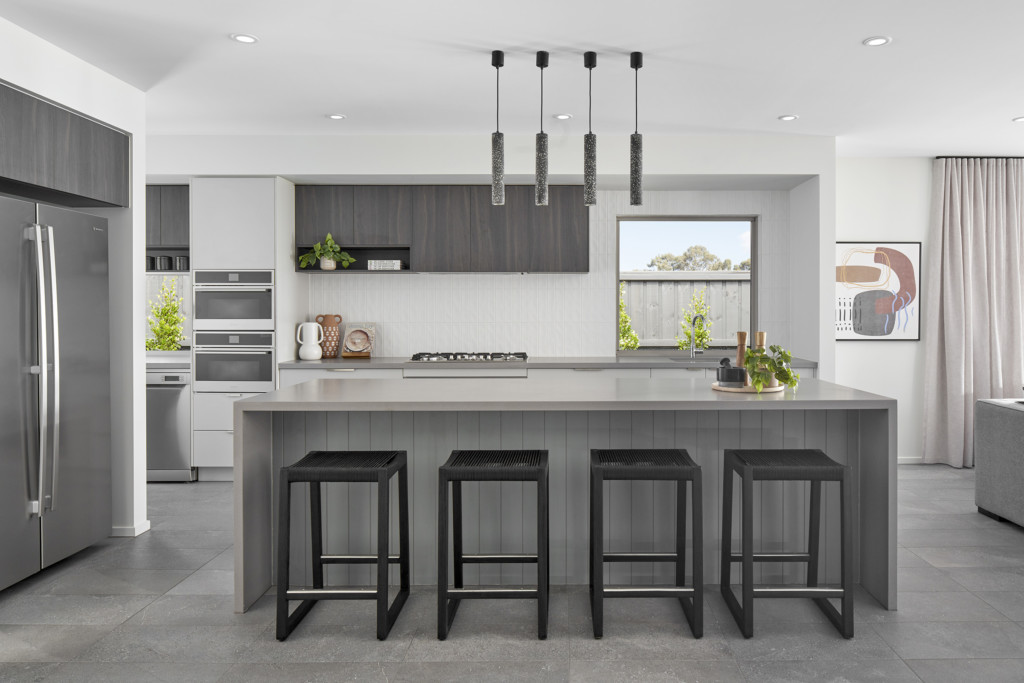
‘Pendant lights can also create a grand statement in the bedroom,’ says Jessica. ‘For example, the bold brass feature lights on display at the Seville 28 display home. Placed either side of the bed, these Amphis Kolvik lights create an industrial-contemporary aesthetic, working well with the room’s native florals and warm-toned linens.’
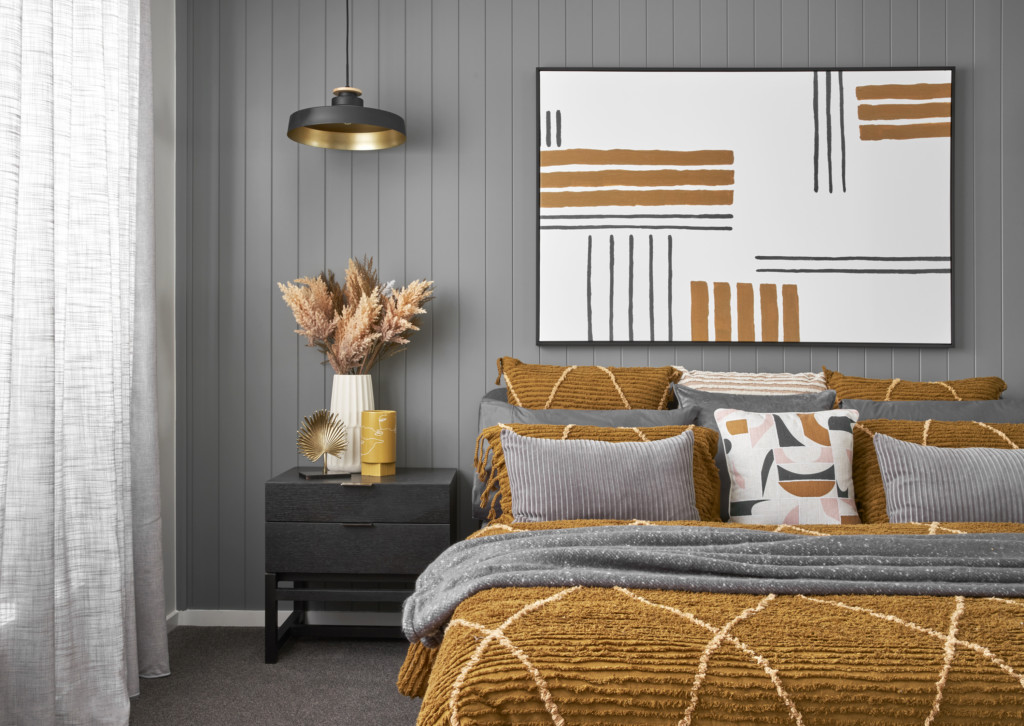
For larger spaces such as the dining room, chandeliers are a bold and dramatic feature. ‘Strip lighting added to your overhead cabinetry or island bench can also help to elevate your kitchen and living design,’ adds Jessica. ‘Or create a sense of drama with a wall light feature to your powder room or hallway, or near your bedroom headboard.’
Consider your lighter colours
The ambiance of a room comes down to the colour of your globe and how the light reacts with your fitting. ‘It’s important that cool task lighting, used in rooms such as the kitchen, is offset by warmer, softer lighting that feels relaxed and inviting,’ says Jessica. ‘Think standing floor lamps in your living spaces and nooks, along with pendants and spotlights that use warm white globes.’
For softer light, opt for a lighter-coloured lampshade in a warmer hue. Darker light fittings focus light on a particular area making them perfect for task lighting in areas such as the study.
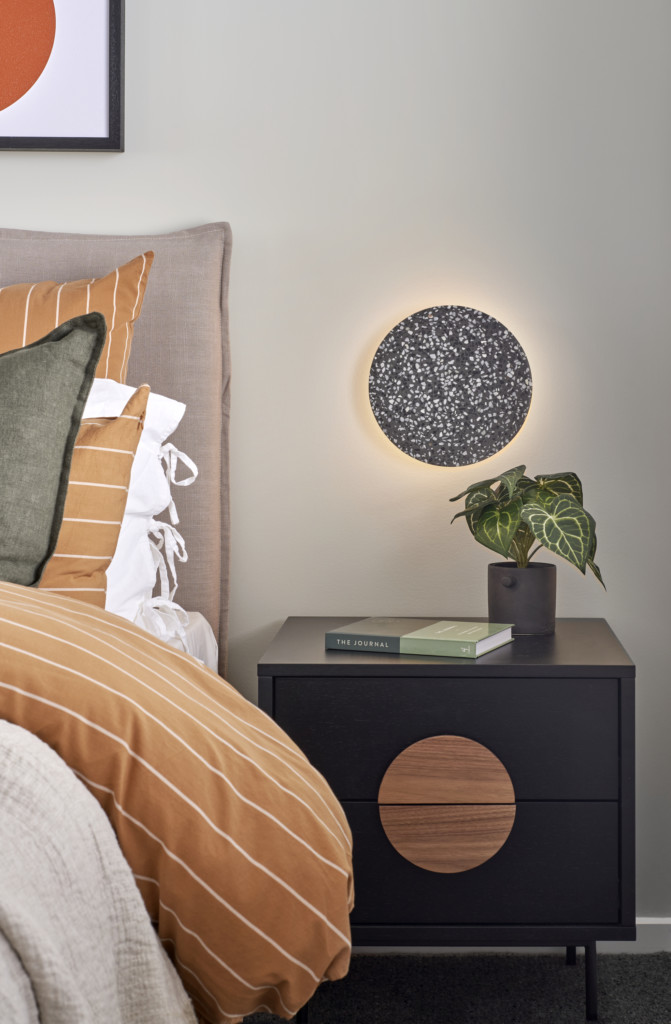
Don’t overdo your light fittings
A common mistake to make is to cram too many feature fittings into too small of a space. For example, placing three large pendants over the island bench next to a gigantic dining room chandelier. ‘The number of feature lights in a space will depend on the size of the room,’ says Jessica. ‘In smaller homes, consider a slim feature over the dining table and decrease the number of pendants over the island from three to two.’
Alternatively, you can also choose to forego the pendants altogether and keep the dining room lighting as your feature.
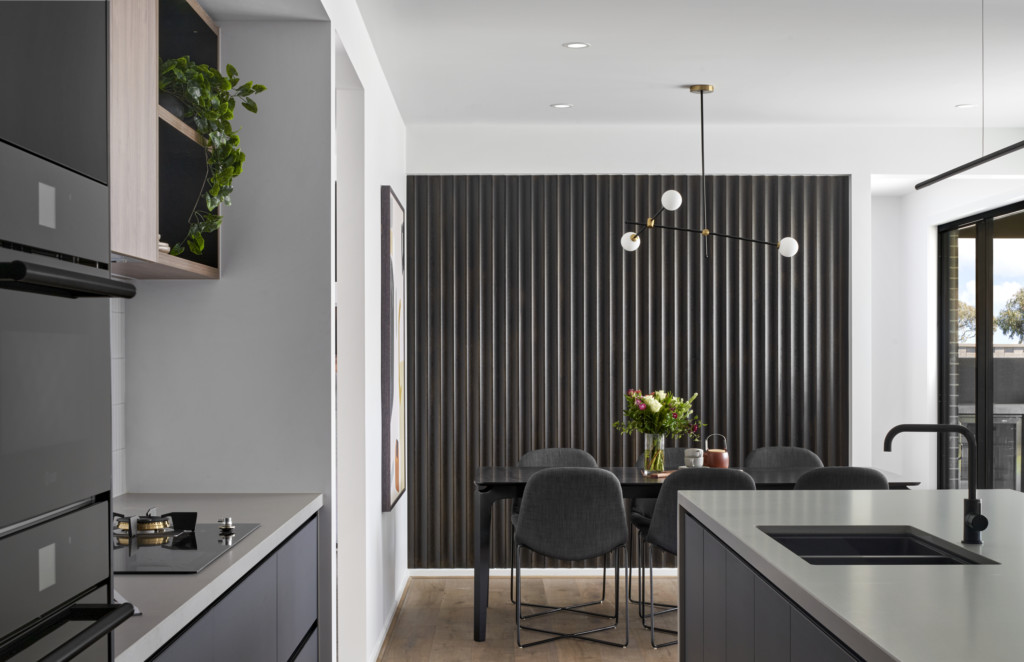
The same goes for downlights. Work with your electrical consultant to understand the wattage of a downlight and how many you need, especially in smaller spaces. It will save you money and the visual pain of too much white light.
Consider your lighting tech
Opt for LED globes over Halogen, and your energy bill will thank you. ‘LED lights are super energy efficient,’ says Jessica. ‘Also consider adding dimmer switches to your downlights wherever possible – particularly in the living and dining spaces.’ This allows you to set the mood when you’re ready to unwind in the evening, while still providing bright task lighting when needed.
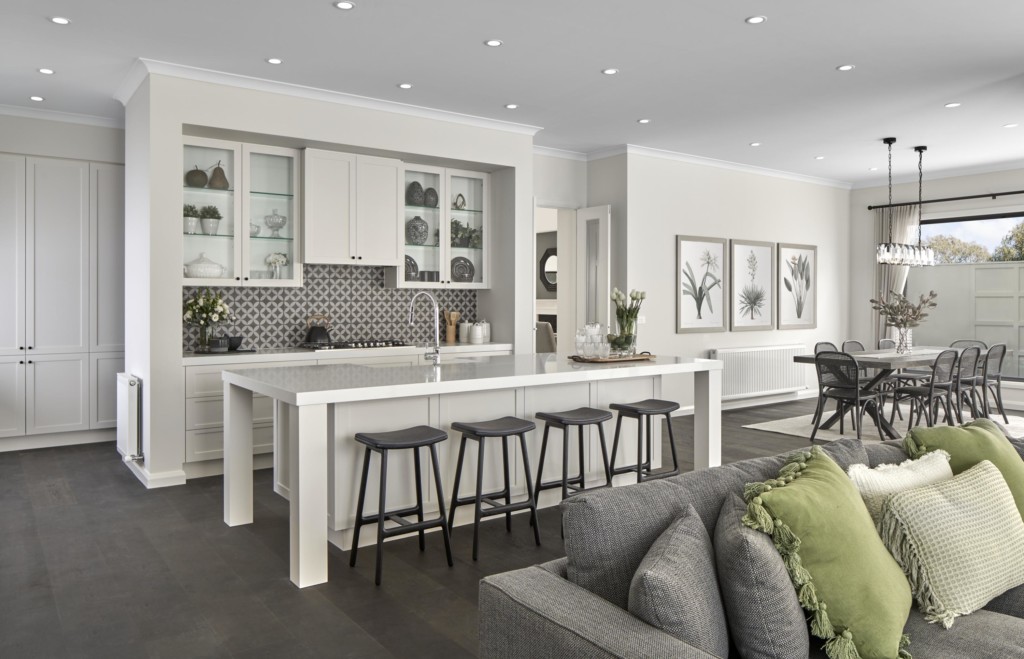
Avoid interior design clashes
It’s important that your lighting complements the rest of your interior design.
‘For a Hamptons style interior, consider black iron or antique-style fittings with a warm white globe,’ says Jessica. ‘Modern interiors will suit sleek, bold fittings in darker shades, while a Scandi home will want to draw in natural or wood elements in their lighting design.’
The most important thing is that your lighting complements and highlights – rather than overpowers – a space. If your interior design uses lots of patterned textiles and patterns, keep your feature lighting in simple block colours.
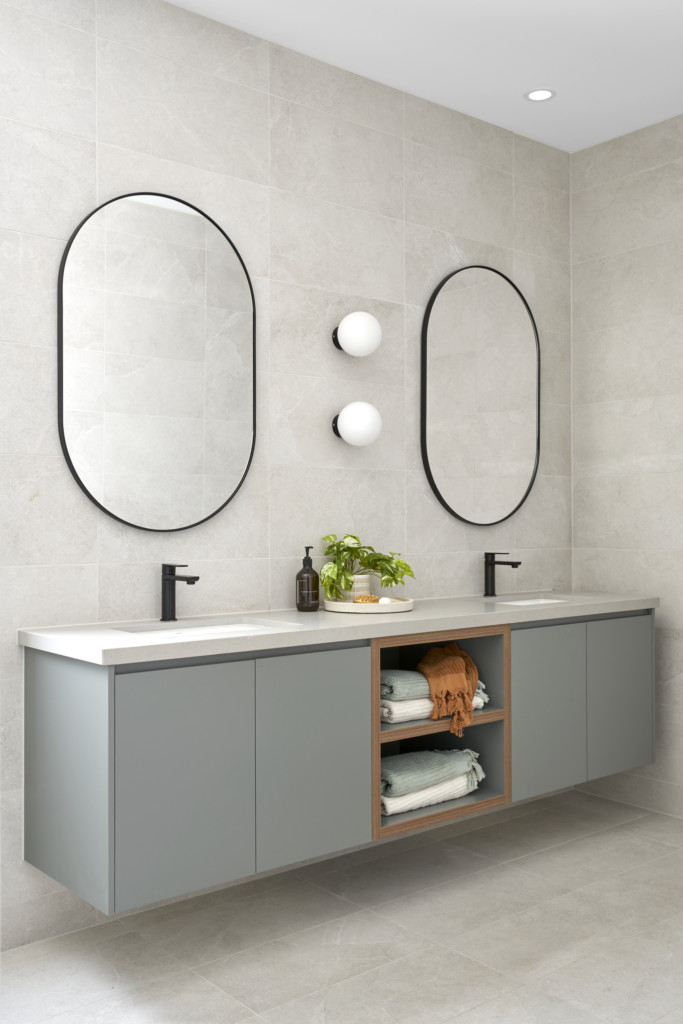
Lighting can also have an impact on how your walls and art appear to the naked eye. If you are using warm, yellow-toned paints, cool white lighting helps to create balance. Creating a monochromatic space with cooler tones? Ensure your fittings adhere to the black and white theme.







